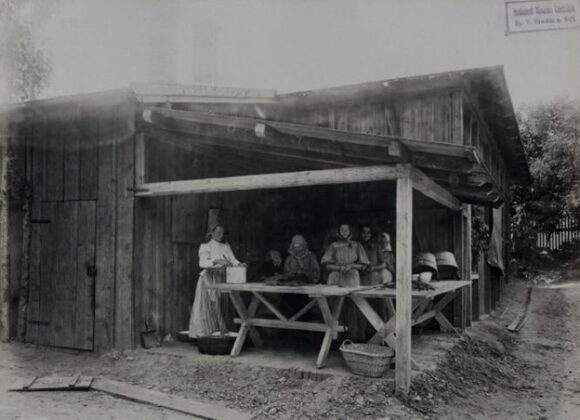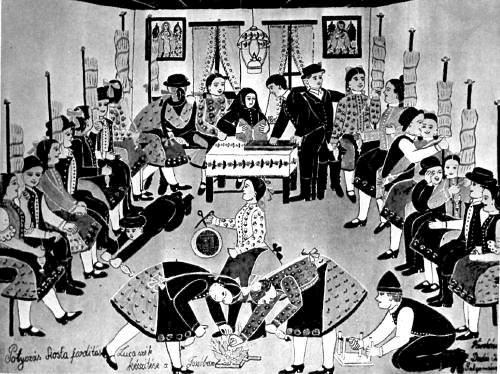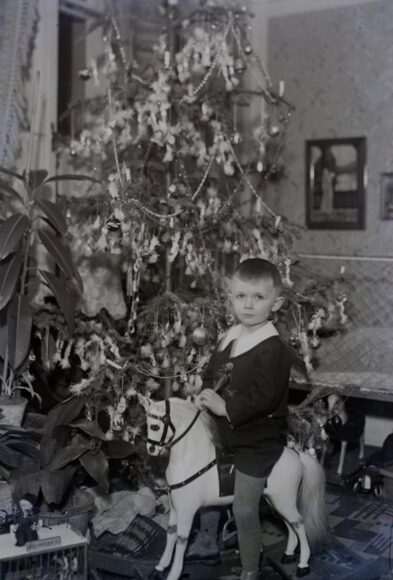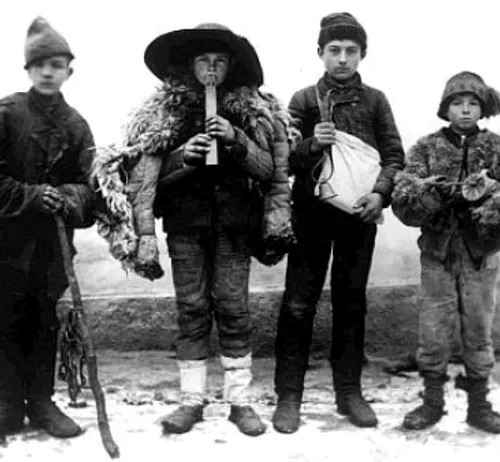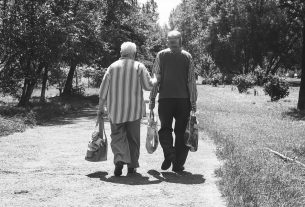With the arrival of the gloomy winter days, a little inspiration can go a long way toward brightening our mood. Thankfully, Hungary fosters numerous fascinating local customs that honor this marvelous festive season. We compiled a list of some of the most fun, intriguing and unusual Hungarian winter traditions to help get you through the winter doldrums.
Winter Women’s Day
Once the harvest was over, young girls and married women would spend most of their days weaving indoors next to the stove. In order to bring some fun into this dull activity, they would share folk tales and sing traditional songs. It was also the time for love spells. On the day of St. Andrew (30 November), unmarried girls would eat only three grains of wheat and quench their thirst with only three drops of water. It was believed that at the end of the day, exhaustion would bring on a deep sleep revealing the names of their future husbands.
Women doing house chores in 1896
Source: Fortepan/Budapest Főváros Levéltára. Levéltári jelzet: HU.BFL.XV.19.d.1.10.025
St. Luca’s Day
Celebrated on 13 December, the day of St. Luca marks the day of the country’s Winter Solstice. Historically, the men in the villages would begin carving a wooden stool with the intention of finishing it by the day of Christmas. Once it was completed, it was carried to the Christmas church service during which its maker would stand on the stool and use it as a high vantage point to identify the witches. However, this practice greatly upset the hexes who would run after the people who revealed their identity. In order to win some time, the men would scatter poppy seeds on the roads which were meant to ward off the witches.
Luca stool in the making
Source: facebook.com/palocmuzeum
Christmas traditions
Interestingly, the Christmas tree tradition dates back to fairly recent times, around the ‘40s and ‘50s. Prior to WWII, children, especially in the region of Transylvania, would still await the arrival of the golden foal whose cart would be filled with shiny gifts. Another unusual Hungarian winter tradition is linked to 6 December, when Santa Claus visits the families and rewards the youngsters with chocolate, candies, and other delicacies. However, there is a hitch. Only those children received presents who behaved well throughout the entire year. The mischievous would only find a bouquet of willow switch tucked in their boots that they left out the previous night.
Christmas 1938
Source: Ferenc Koroknai-Tegez Fortepan 116041
Regölés – Hungarian caroling
The ancient tradition of caroling is a widespread folk custom across entire Europe. The singers, called regösök, would go from door to door in the villages to tell good wishes to their neighbors for the following year. In the Transdanubian region, this practice was mainly associated with young lads visiting the houses of unmarried girls and singing so-called fertility songs. This Hungarian winter tradition also served the purpose of fixing up couples in the local community and sending them off to marriage. The guys would carry chain whips and flirtatiously gave a few slaps to the young girls while making lots of noise with jug horns.
Regösök
Source: Facebook profile of József Attila Múzeum
– Eleonora Jobst –
Main picture: Fortepan 176350 Chuckyeager tumblr










